- Joined
- Oct 22, 2018
- Messages
- 149
- Points
- 253

As a successor to the “Tjalk”, which due to its design was only partially suitable for sea navigation, a new type of coastal sailing ship emerged at the beginning of the 18th century, the “Schmack”, also known as “Schmackschiff” or “Smak”, a coastal and marsh sailing ship with a bottom flat, side daggerboards and rounded bow. She was a versatile and seaworthy cargo ship, responding to the increase in maritime trade along the southern coast of the North Sea.
To improve seaworthiness compared to the “Tjalk”, the “Schmack's” hull featured fuller and more rounded shapes, greater draft and freeboard, and an increase in ballast that favored better stability. The flat-bottomed “Schmacks” were mostly equipped with outboard daggerboards, although examples with keel daggerboards were also built. It was equipped with two masts and a rig initially equipped with a spritpsail that was later replaced by a gaff. It could also mast a square flying topsail on the main mast, with a staysail and a jib in the bow. The mizzen mast, also called a “druil” mast, was placed on a crossbar located above the tiller, which was attached to the rudder shaft passing through a triangular opening in the stern, the so-called “hennegat”.
This type of boat was in use in the Netherlands from the 16th to the 19th century and also in Germany from the late 18th to the 19th century, later being displaced by the “kuff”.
Model Features
• Length: 105 mm.
• Total length: 170 mm.
• Width: 39 mm.
• Scale:1:200
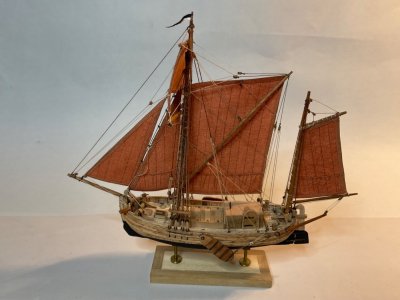
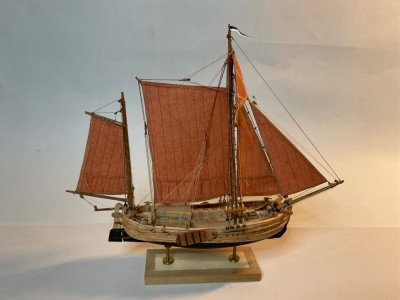
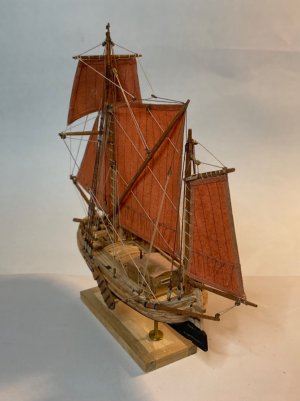
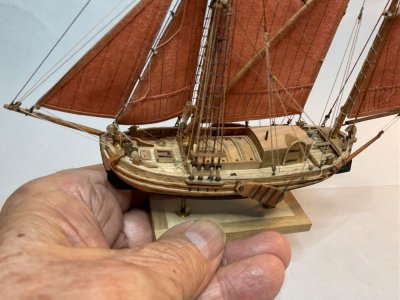
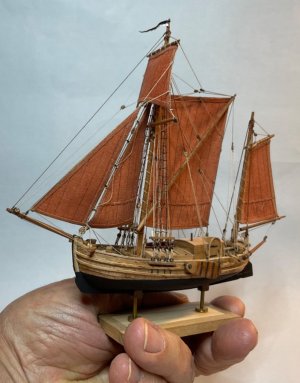
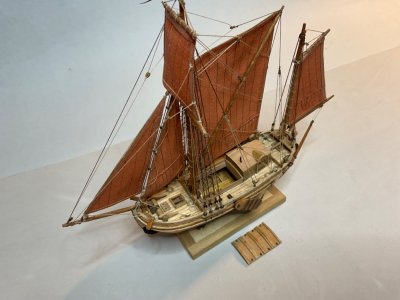
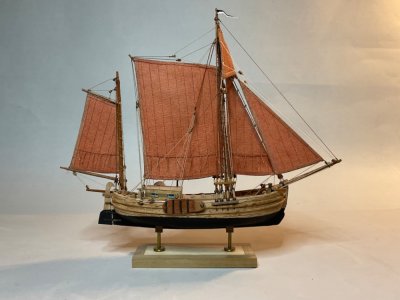
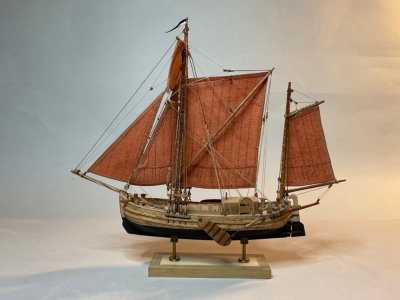

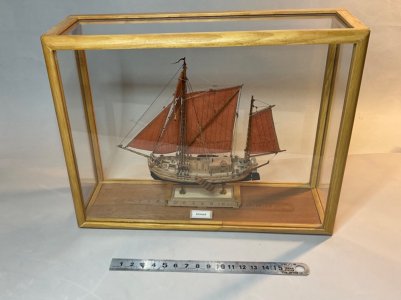
To improve seaworthiness compared to the “Tjalk”, the “Schmack's” hull featured fuller and more rounded shapes, greater draft and freeboard, and an increase in ballast that favored better stability. The flat-bottomed “Schmacks” were mostly equipped with outboard daggerboards, although examples with keel daggerboards were also built. It was equipped with two masts and a rig initially equipped with a spritpsail that was later replaced by a gaff. It could also mast a square flying topsail on the main mast, with a staysail and a jib in the bow. The mizzen mast, also called a “druil” mast, was placed on a crossbar located above the tiller, which was attached to the rudder shaft passing through a triangular opening in the stern, the so-called “hennegat”.
This type of boat was in use in the Netherlands from the 16th to the 19th century and also in Germany from the late 18th to the 19th century, later being displaced by the “kuff”.
Model Features
• Length: 105 mm.
• Total length: 170 mm.
• Width: 39 mm.
• Scale:1:200













